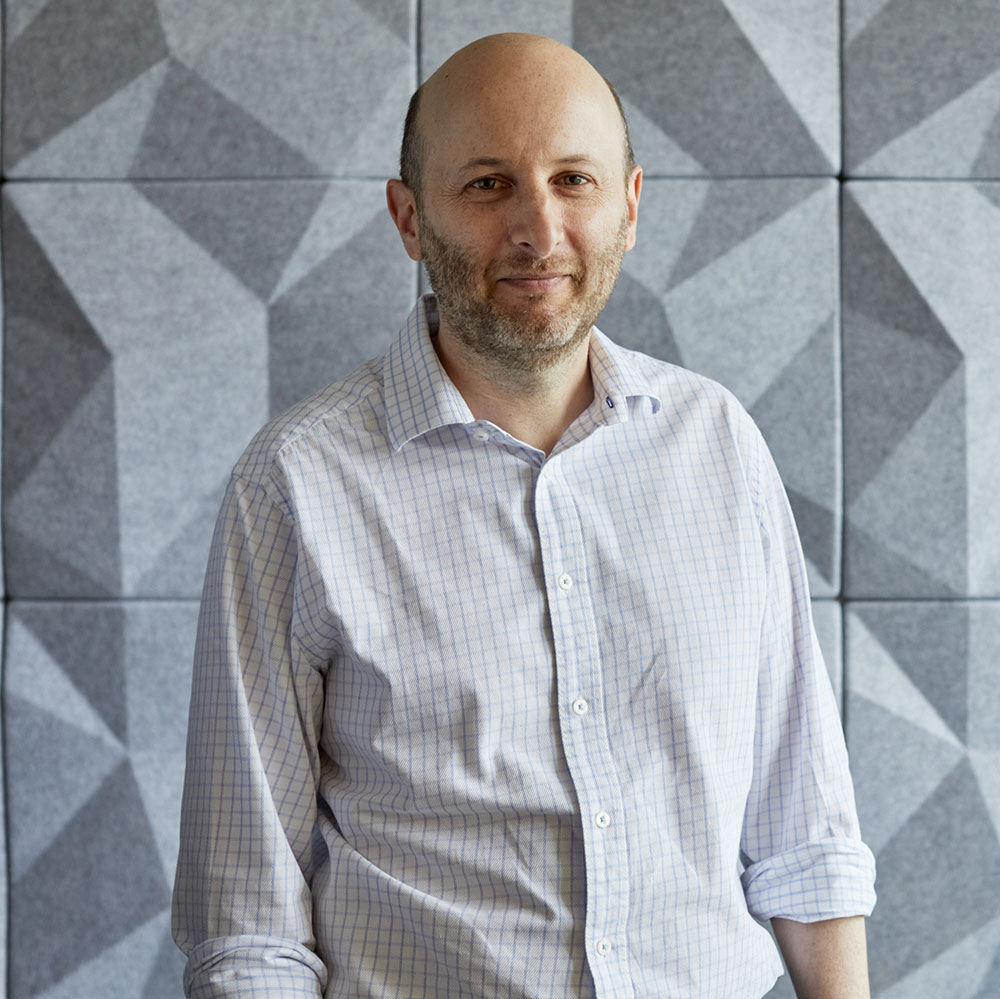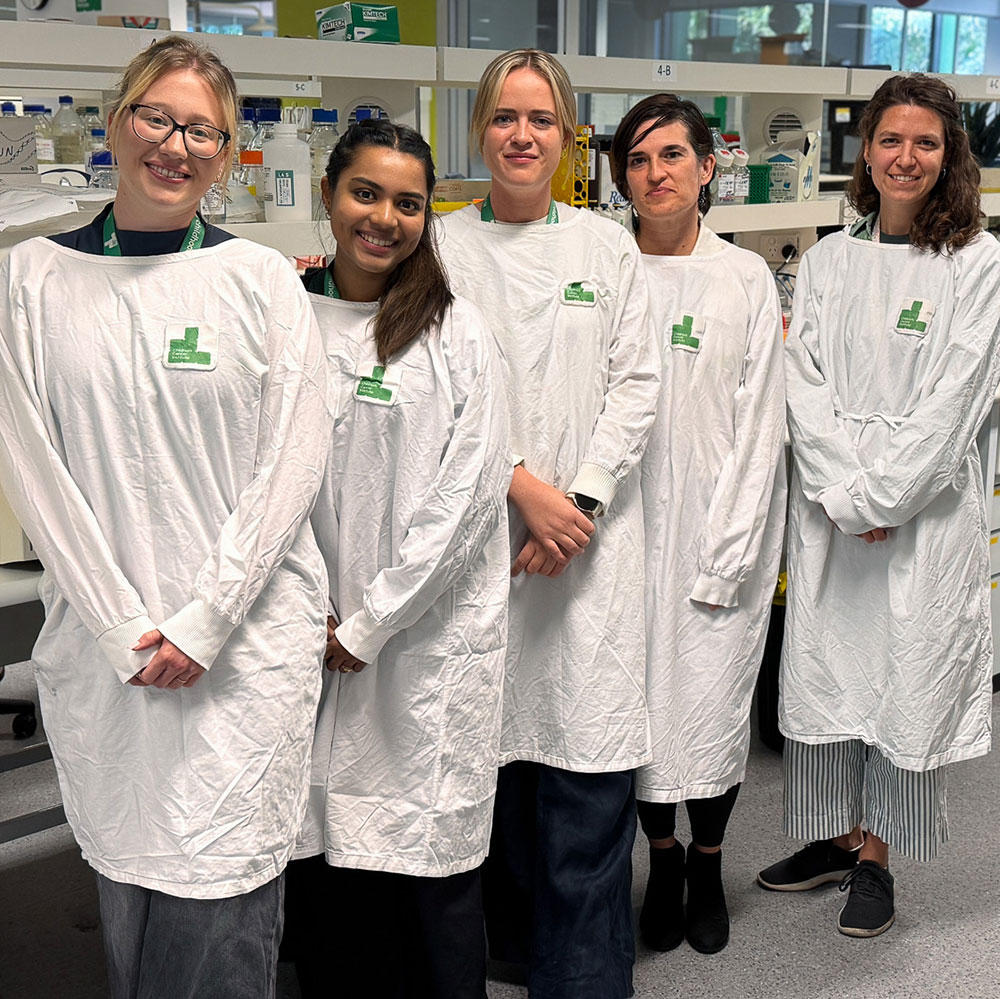Group Leader
What we do
Our laboratory is dedicated to developing novel therapies for the most aggressive childhood cancers. A key area of our research is investigating new treatment strategies for malignant and incurable childhood brain tumours. We have a strong research focus on diffuse midline glioma (DMG) and diffuse intrinsic pontine glioma (DIPG), as well as glioblastoma, ependymoma and medulloblastoma.
DIPG/DMG is a highly malignant glioma that arises in early childhood, with an average survival time from diagnosis of 9 to 12 months. Patients do not respond to chemotherapy, and radiation therapy only results in a short delay in tumour progression. Similarly, glioblastoma is a very aggressive brain tumour known for its rapid growth and resistance to conventional chemotherapy. Ependymoma and medulloblastoma, while potentially curable at diagnosis, are incurable after relapse, and the current standard of care treatments often leave devastating long term side effects. All these factors mean that new treatments are urgently needed for the majority of malignant childhood brain cancers.
Our team is working on several innovative treatments for childhood brain cancers that hold promise as new, active therapies. We have made multiple discoveries that use different methods to attack these devastating brain cancers using targeted therapies, immunotherapies and advanced drug delivery systems.
We have ongoing collaborations with international partners to accelerate the translation of these treatments from the lab to the clinic. Our ultimate goal is to improve outcomes and provide new hope for children battling brain cancer.
Funding for our research comes from a variety of sources, including the National Health and Medical Research Council, Cancer Australia, Medical Research Future Fund, Cancer Institute NSW, NSW Cancer Council, Kids Cancer Alliance, New Zealand Health Research Council, DIPG Collaborative, The Cure Starts Now, The Kids Cancer Project, Robert Connor Dawes Foundation, Benny Wills Brain Tumour Fund, Dainere’s Rainbow Brain Tumour Research Fund, We Love You Connie Foundation, Isaac McInnes Fund, McPhillamy Fund, Matty’s Hope Fund, and Levi’s Project.
Research projects
DMG/DIPG and Brain Tumour PDX models
Contact: Prof David Ziegler, dziegler@unsw.edu.au
A critical challenge in improving treatments for DIPG has been the lack of surgical tissue for biological studies. To address this, we initiated the first national DIPG tumour donation program.
- Tissue donation and culturing: We use post-mortem samples to grow a panel of DIPG neurosphere cultures. These serve as a unique platform to investigate DIPG biology and test novel therapies.
- Mouse models and screening: We have developed unique mouse models of DIPG and conducted robotic high-throughput screens to identify and test new therapeutic approaches. Further combination screens have identified potentially helpful combination therapies.
Beyond DMG/DIPG:
Patient-derived xenograft (PDX) models: As part of the Zero Childhood Cancer (ZERO) personalised medicine clinical trial program, we are developing PDX models for various brain tumours, including glioblastoma, ependymoma, medulloblastoma, and DIPG/DMG. These models are crucial for studying the unique characteristics of these tumours and testing personalised treatment strategies.
Therapeutic strategies for DIPG and other high-risk brain tumours
Contact: Prof David Ziegler, dziegler@unsw.edu.au
We are currently investigating several different therapeutic strategies to treat DIPG and other high-risk brain tumours such as glioblastoma, ependymoma and medulloblastoma. These strategies include:
- modulation of cellular metabolism
- targeting the epigenome
- targeting posttranslational protein modifications
- targeting cellular growth factors and tyrosine kinases
- targeting the cell cycle apparatus
- modulation of the tumour microenvironment
- identifying novel oncogenic biomarkers with CRISPR
- investigating new targeted agents
- exploring novel immunotherapeutic strategies
- investigating mechanisms of drug resistance.
We recognise that no single strategy will likely eradicate the most aggressive brain tumours. Therefore, we place a strong emphasis on developing rational combination therapies. This involves leveraging CRISPR and high-throughput drug screening to identify and test the most effective therapeutic combinations. Through these comprehensive approaches, we aim to make significant advancements in treating these devastating cancers.
Personalised therapies for brain tumours
Contact: Prof David Ziegler, dziegler@unsw.edu.au
The Zero Childhood Cancer Program (ZERO) seeks to identify personalised therapies for children with high-risk cancers. Within ZERO, the Brain Tumour Group leads the brain tumour arm of the program, which provides genomic analyses, in vitro drug screening, and in vivo personalised xenograft models for children with brain tumours.
In addition to defining novel therapeutic approaches for children participating in the ZERO national clinical trial (which Prof Ziegler chairs) in real-time, our group leads a research discovery program that utilises the rich database of genomic and drug screening data generated by ZERO to investigate novel therapies for all high-risk childhood brain tumours.
Levi's Project: A future for kids with DIPG
Contact: Prof David Ziegler, dziegler@unsw.edu.au
Levi’s Project is a dedicated DIPG research project named in honour of 8-year-old Levi Wheeler. The project builds on research previously done at Children’s Cancer Institute. We have already established Australia’s first-ever DIPG tumour bank, which contains samples of tumours from children with DIPG and have tested a range of drugs against DIPG cells grown from these samples. To date, we have identified multiple therapies that focus on metabolic, oncogenic and epigenetic pathways that are under clinical development in patients with DIPG. Levi’s project focuses on the following research areas:
- Project 1: Total Therapy for DIPG builds on the success of the Total Therapy for ALL approach. By experimenting with various sequences and doses, we aim to identify the most effective drug combinations for treating DIPG.
- Project 2: Levi’s Combination aims to enhance the treatment efficacy of therapeutic agents under clinical development by identifying new combinations.
- Project 3: Levi’s Pathway focuses on how current treatments affect the tumour microenvironment and to develop new combination therapies for clinical use.
- Project 4: Levi’s Discovery seeks to define new oncogenic targets and therapies for DIPG.
- Project 5: Levi’s Breakthrough aims to understand how DIPG tumours influence the blood-brain barrier and to develop modulators that enhance the penetration of anticancer drugs.
Modulating the brain tumour microenvironment to improve therapeutic outcomes
Contact: Prof David Ziegler, dziegler@unsw.edu.au
We are dedicated to understanding how brain tumours, including DMG/DIPG and other high-risk childhood brain cancers, influence:
- the blood-brain barrier (BBB) ? we are developing modulators to enhance the penetration of currently available anticancer agents
- brain cells such as neurons ? our research focuses on preventing tumours from exploiting neuron function for their proliferation
- the brain's immune cells ? we aim to harness the body’s own defence systems to combat tumour growth.
By unravelling the mechanisms behind the tumour and brain microenvironment, we aim to improve drug delivery and treatment outcomes for these aggressive cancers.
Team
Group Leader
Senior Scientist, Levi Wheeler Fellow
Associate Professor Maria Tsoli
Senior Scientist
Senior Research Officers
Dr Kenny Ip
Dr Holly Holliday
Research Officers
Dr Rebecca Lehmann
Dr Aaminah Khan
Dr Caitlin Ung
Dr David Lorincz (Levi Wheeler Early Career Fellow)
Senior Research Assistants
Dr Joan Chen
Jie Liu
Research Assistants
Anjana Gopalakrishnan
Hieu Nguyen
Alvin Lee
Eyden Wang
PhD Students
Elisha Hayden
Arjayeeta Samadder
Joshua Zhu
News & blogs

Professor David Ziegler elected fellow of the Australian Aca...

Understanding how brain cancer develops in children holds ke...

International study sheds new light on deadly childhood brai...

Professor David Ziegler awarded prestigious scientific award
Get in touch
Do you have a question about our work? For any enquiries please don’t hesitate to contact us.









